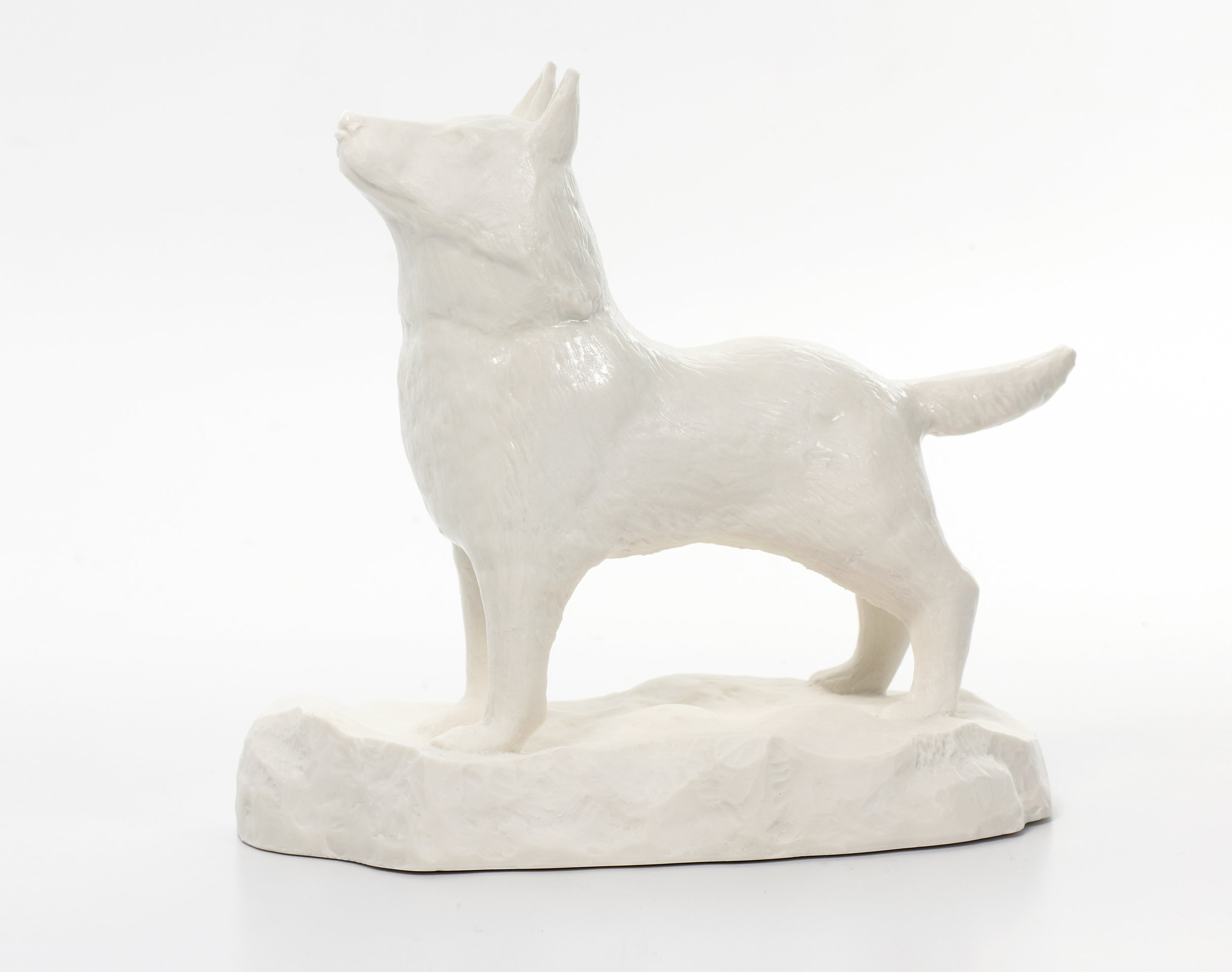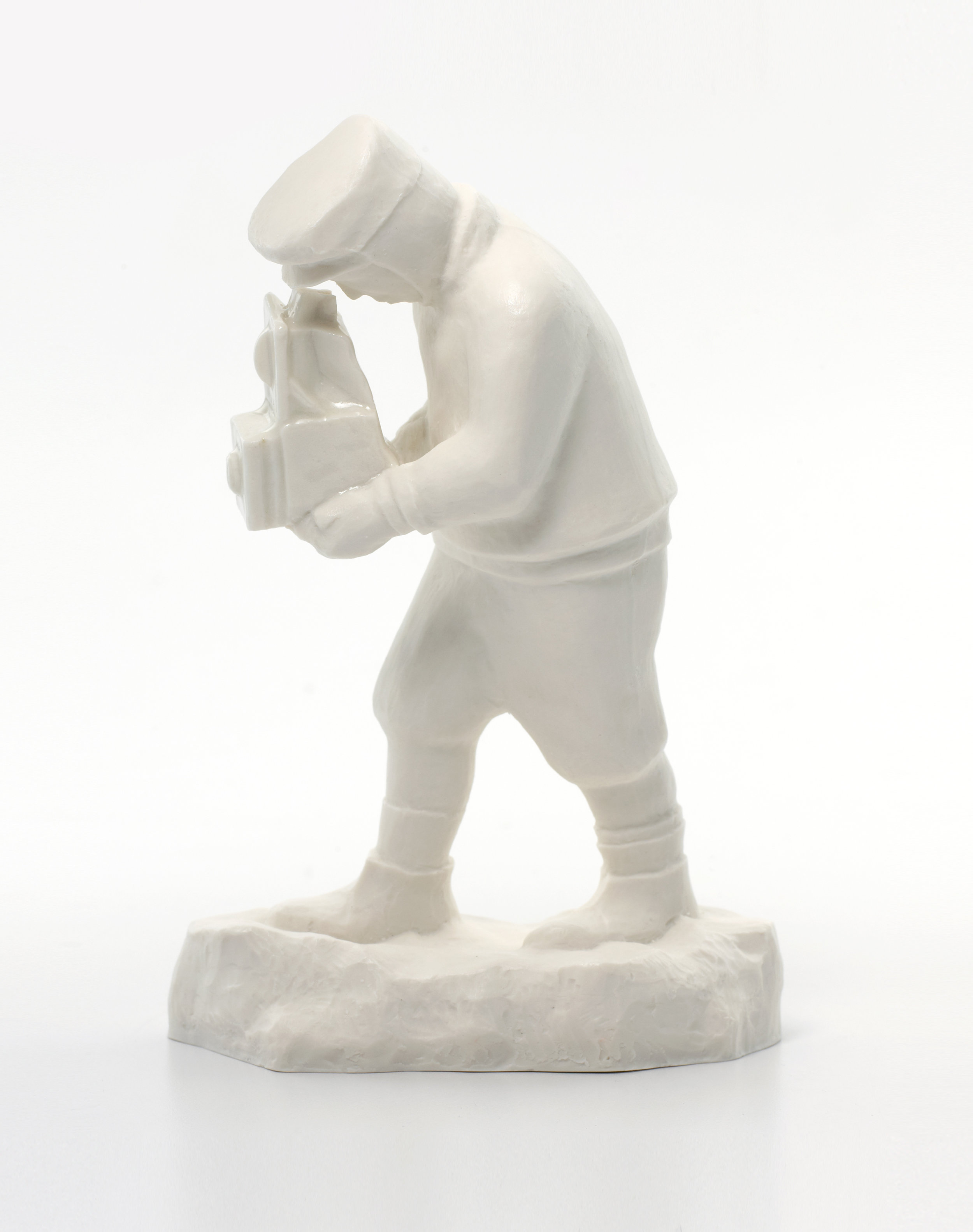Polar Scott
Figurines have often been used to tell stories. They can illustrate fictional narratives and, as they do in this series of ceramic figurines, reflect on real history. Here they weave an account of gallantry, documenting the tragic yet inspirational story of the Terra Nova Expedition of 1910-1912.
While some of the figurines are a salute to the determination and heroic endeavours of the explorers, others explore the string of 'bad luck' that plagued this fateful adventure. At the time, some superstitious members of the party attributed blame to the cameras brought by Herbert Ponting, the expedition photographer. They were considered the 'Jonahs' of the trip. In the aftermath of the expedition, blame was also attributed to the unfortunate choice of ponies, which resulted in the men having to haul heavily burdened sledges themselves in unexpectedly horrendous weather conditions. These issues have been the subject of much speculation, consideration of which has found its way into these statuettes.
Porcelain is often associated with fragility and delicacy. It is however, also a material of considerable strength, hardness and resilience. Its use here is appropriate due to its ability to withstand extremes of heat and cold. The matt quality and whiteness of the porcelain reflects the expanses of snow and ice. Without familiar markers (trees, buildings, etc.) scale too becomes confused in this vast landscape.
The proportions of the figurines echo this distortion and do not relate to one another in an easy or obvious way: a dog looms over a tent; a sledge dwarfs an iceberg. In these art works the hostile environment and the objects within it are transformed to a domestic scale, much like the traditional Inuit ivory carvings in the museum collection.
The museum tells the story of exploration through artefacts, presented as evidence of events. The figurines in these cabinets are my interpretation and response to these objects. This contrast is interesting. Both deal with narrative but the intentionality is different. While the museum artefacts present a direct connection to specific realities, the art works are more about general emotional states.







